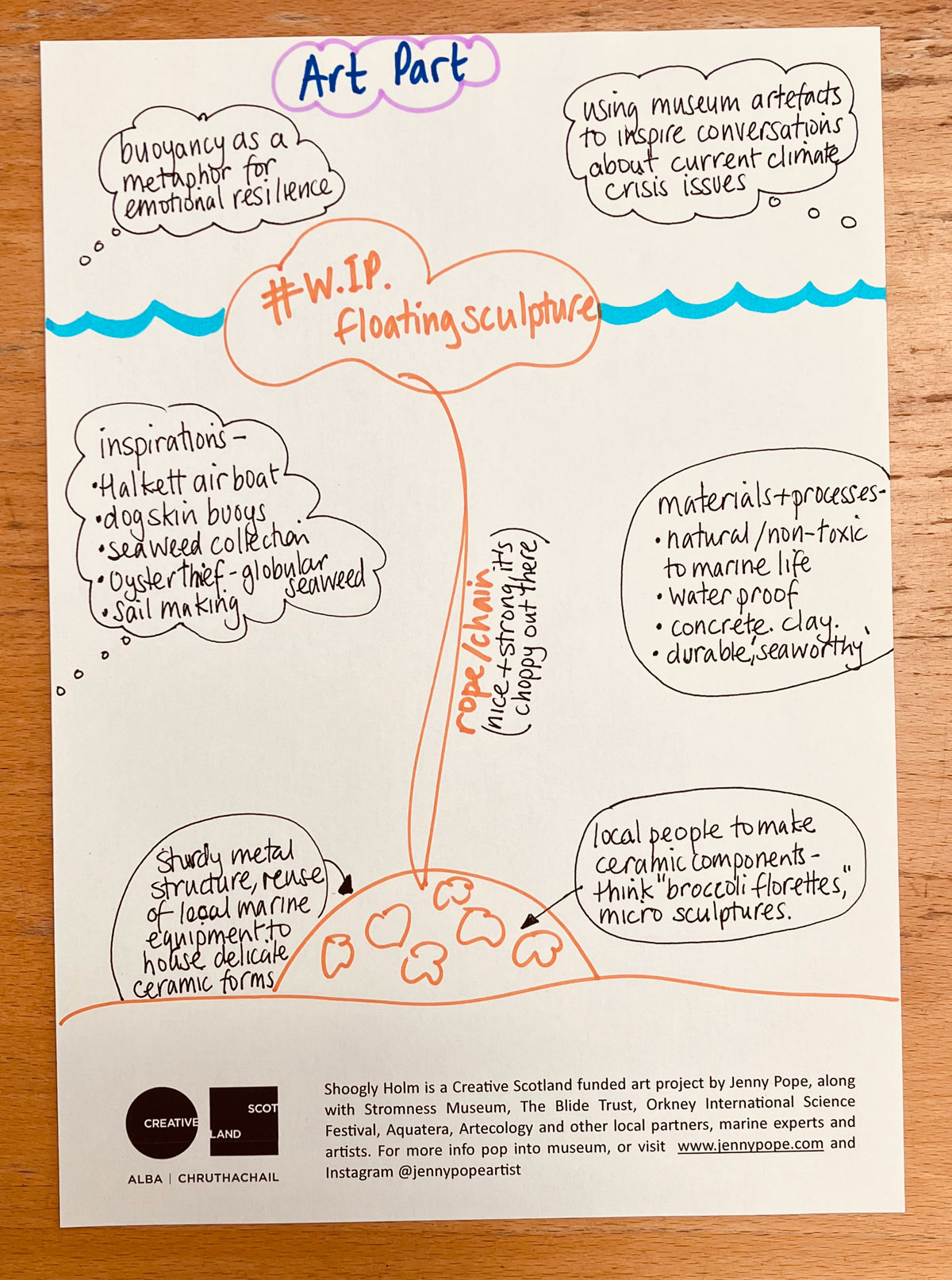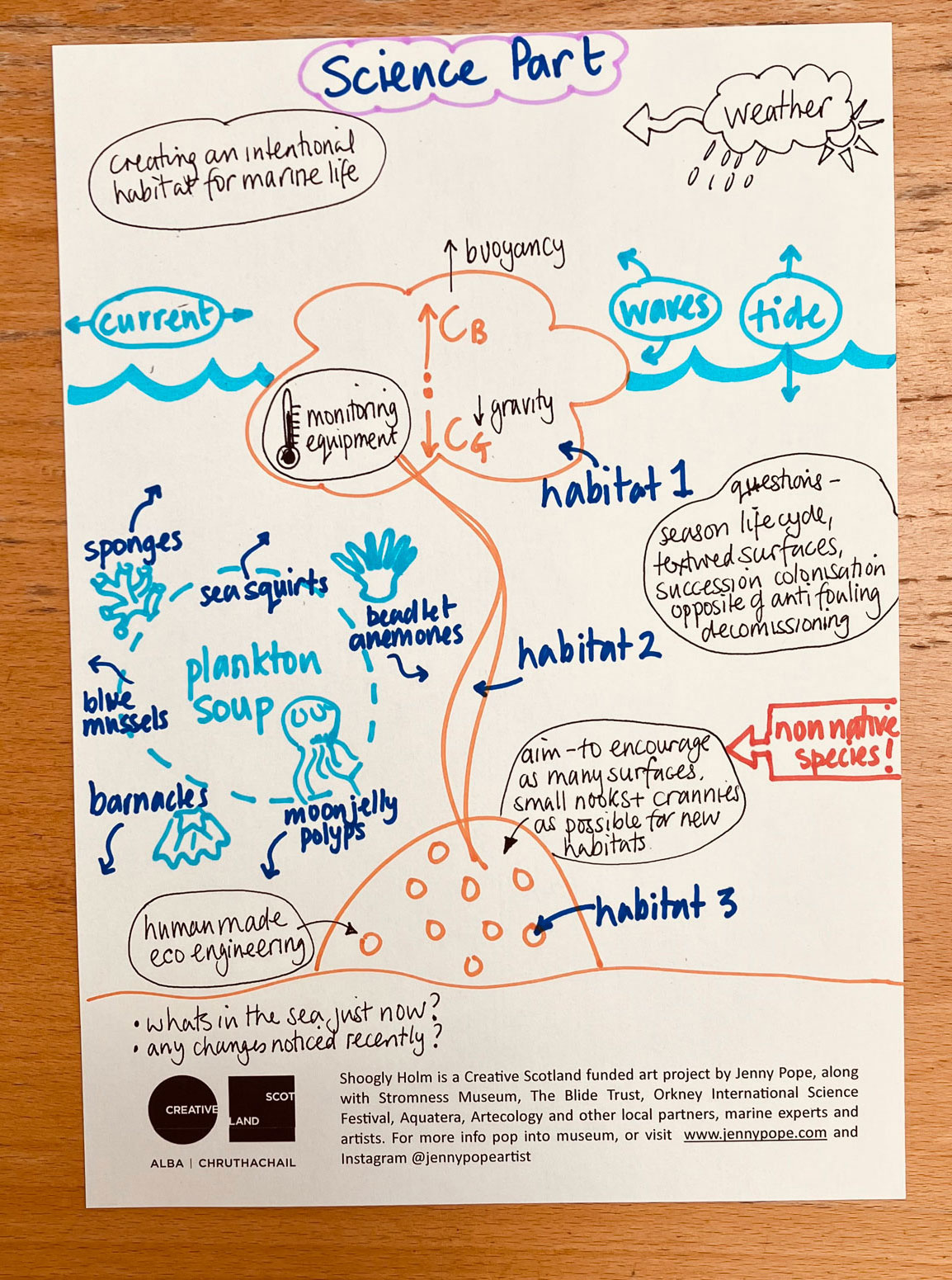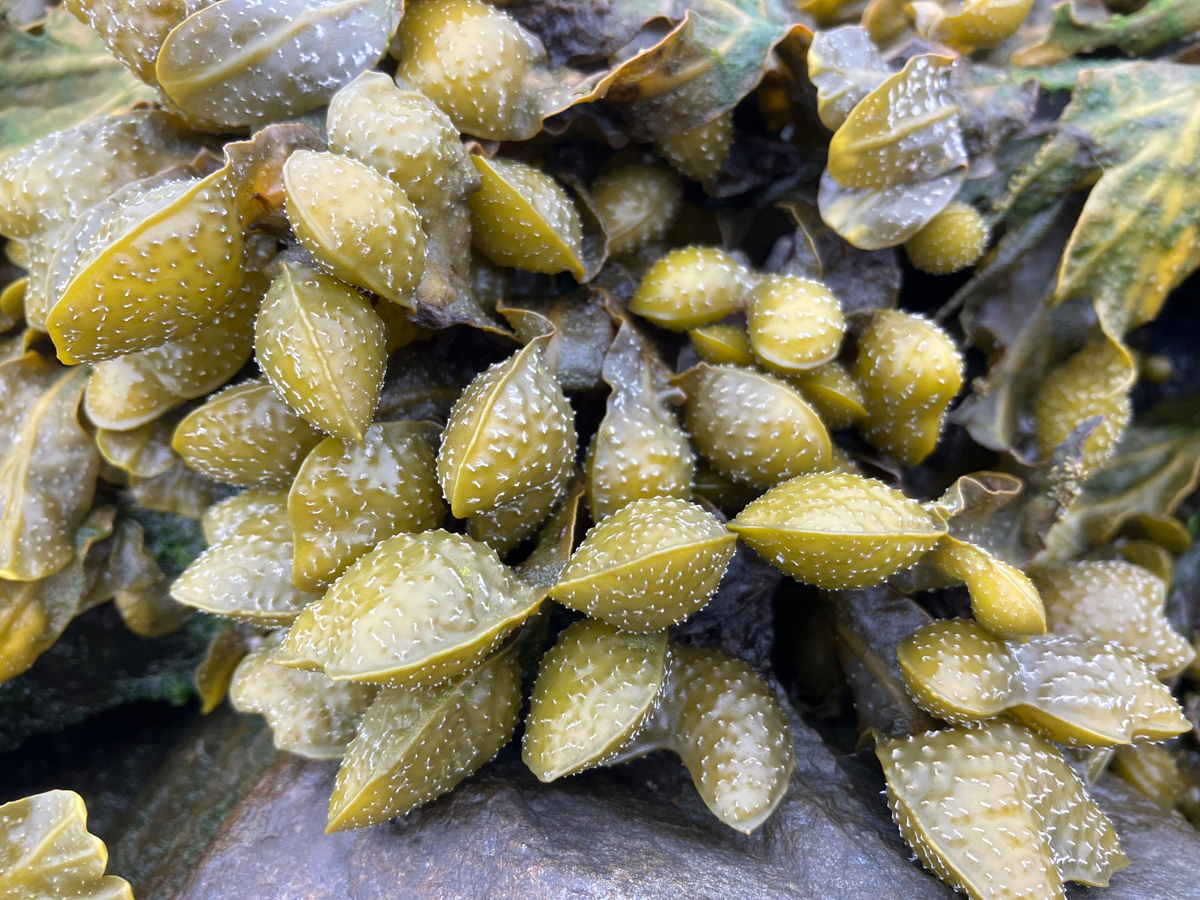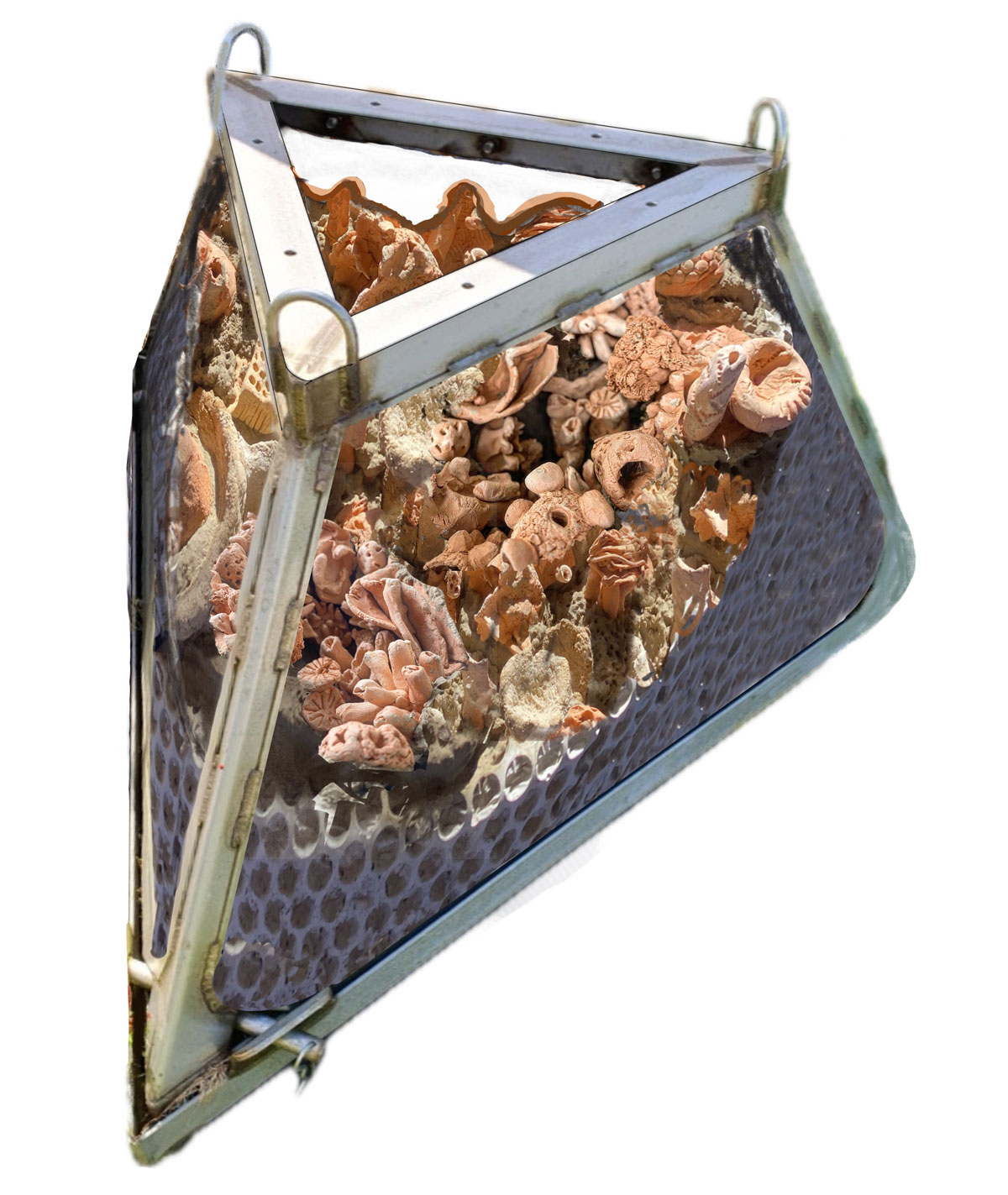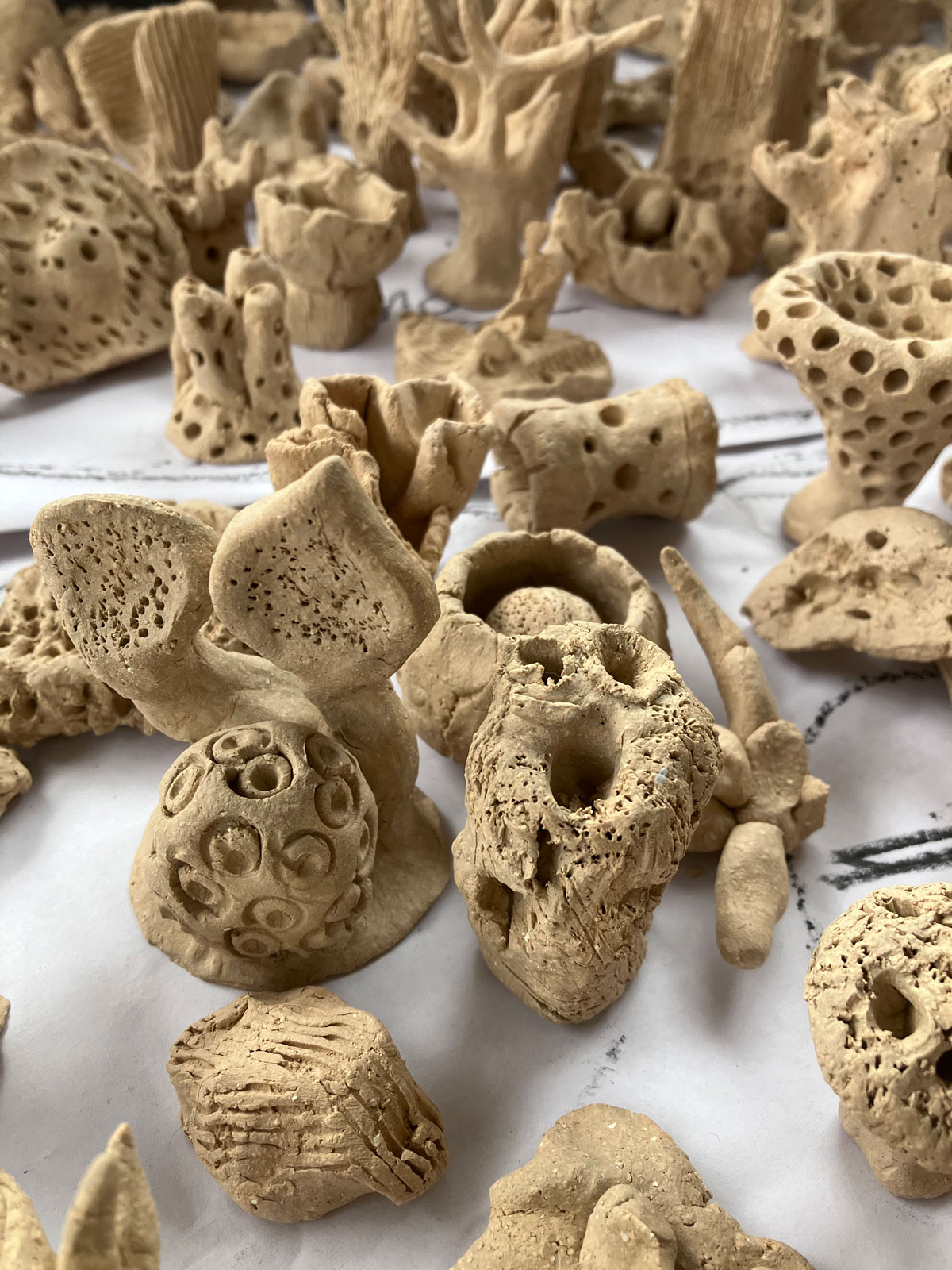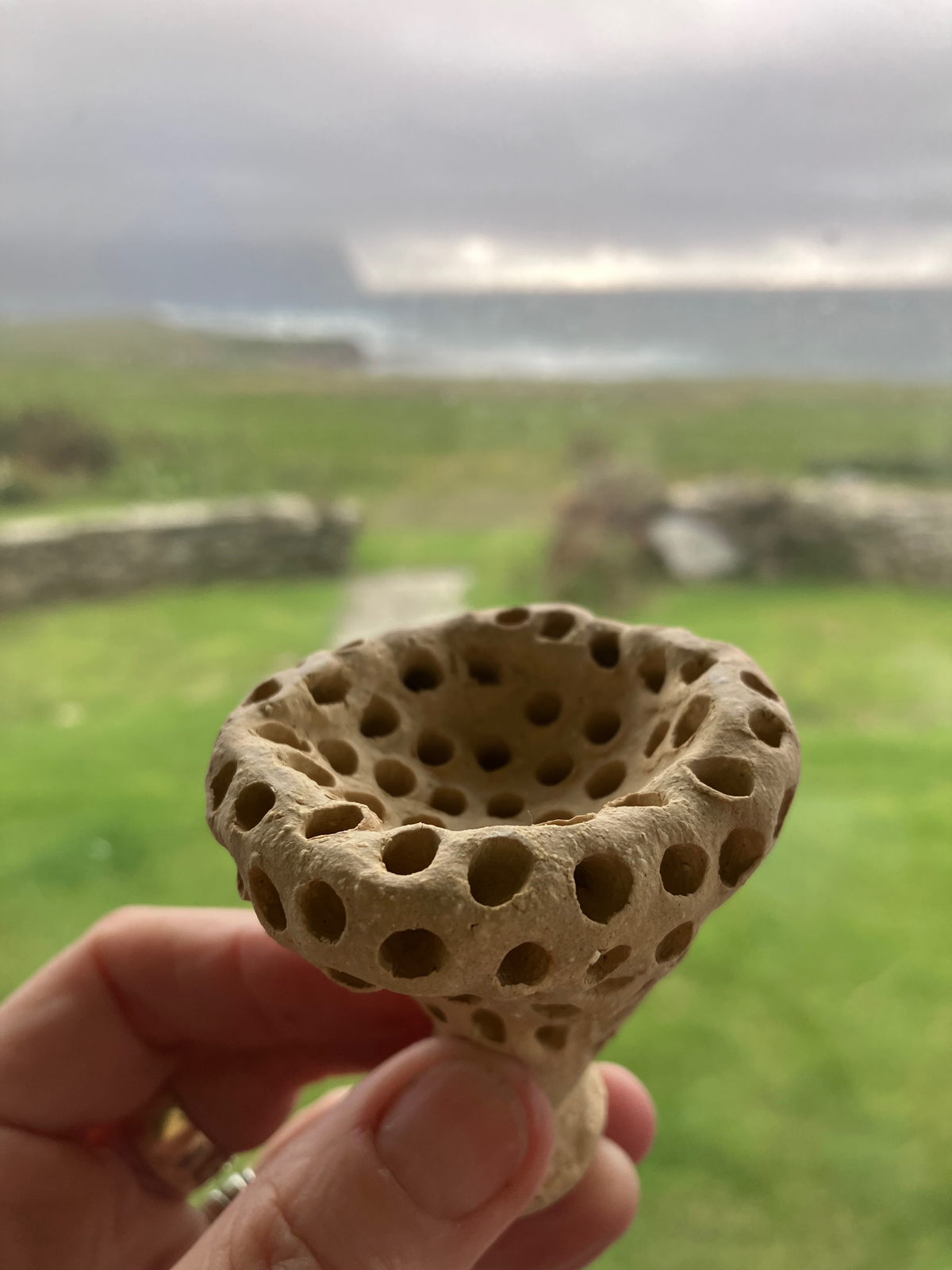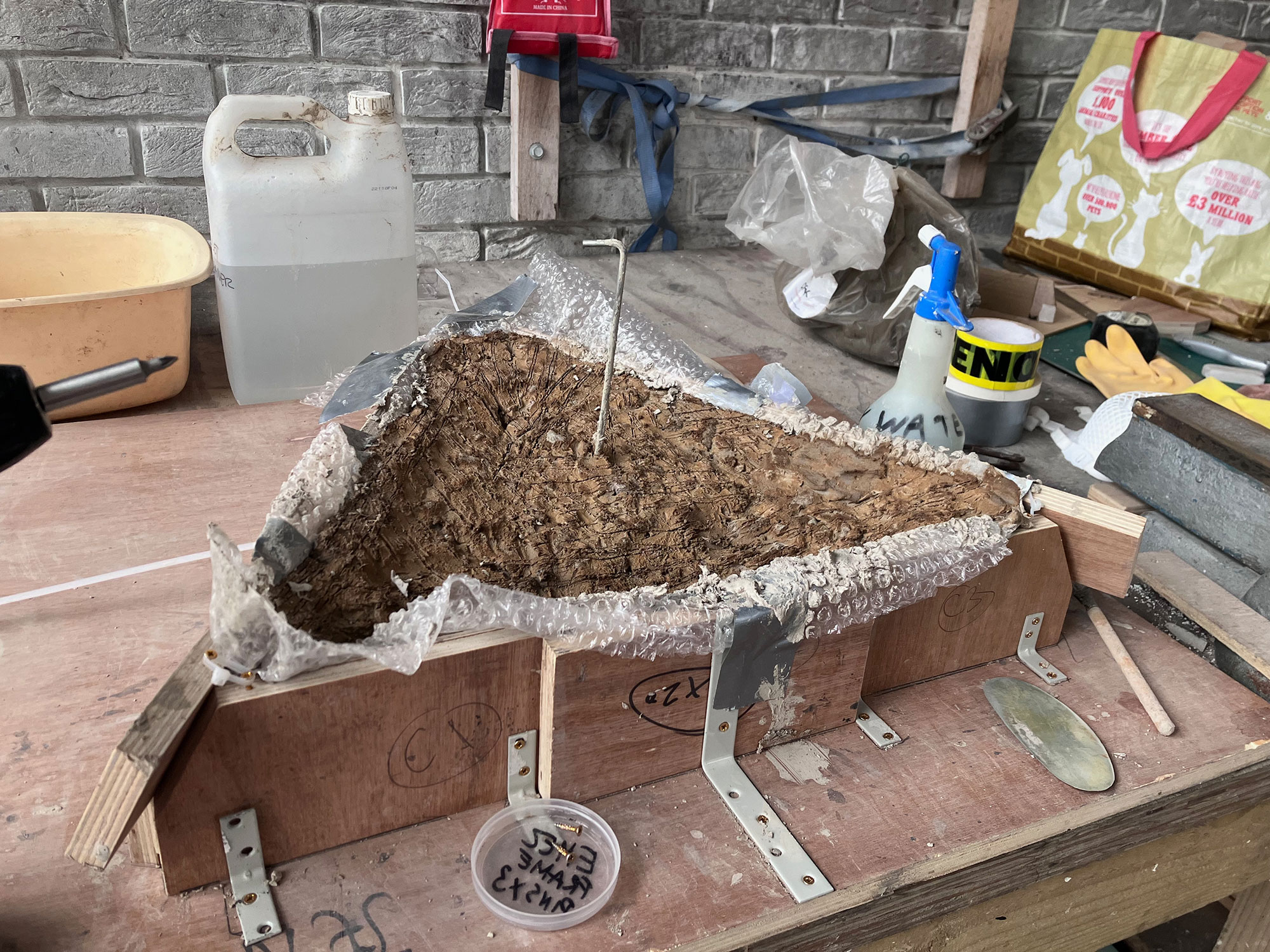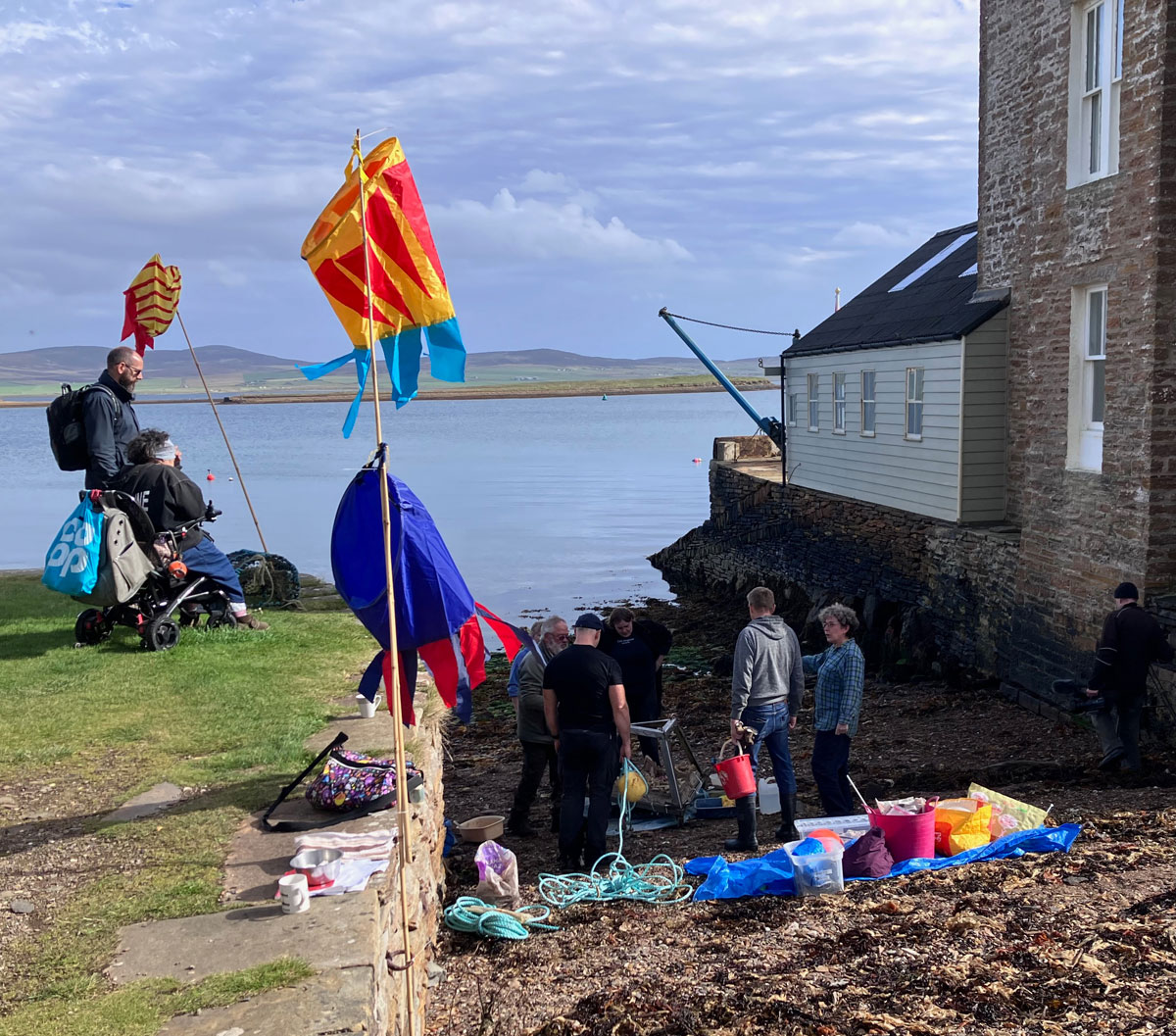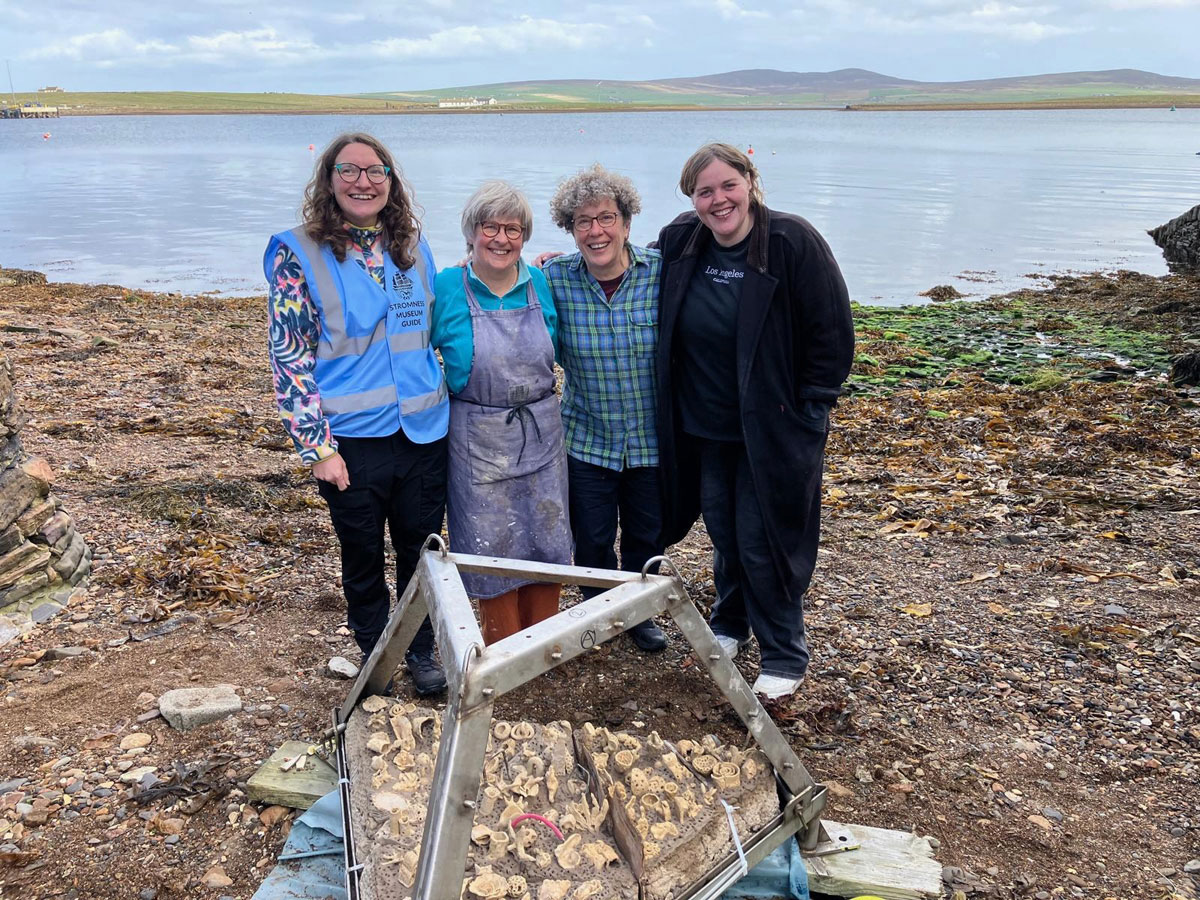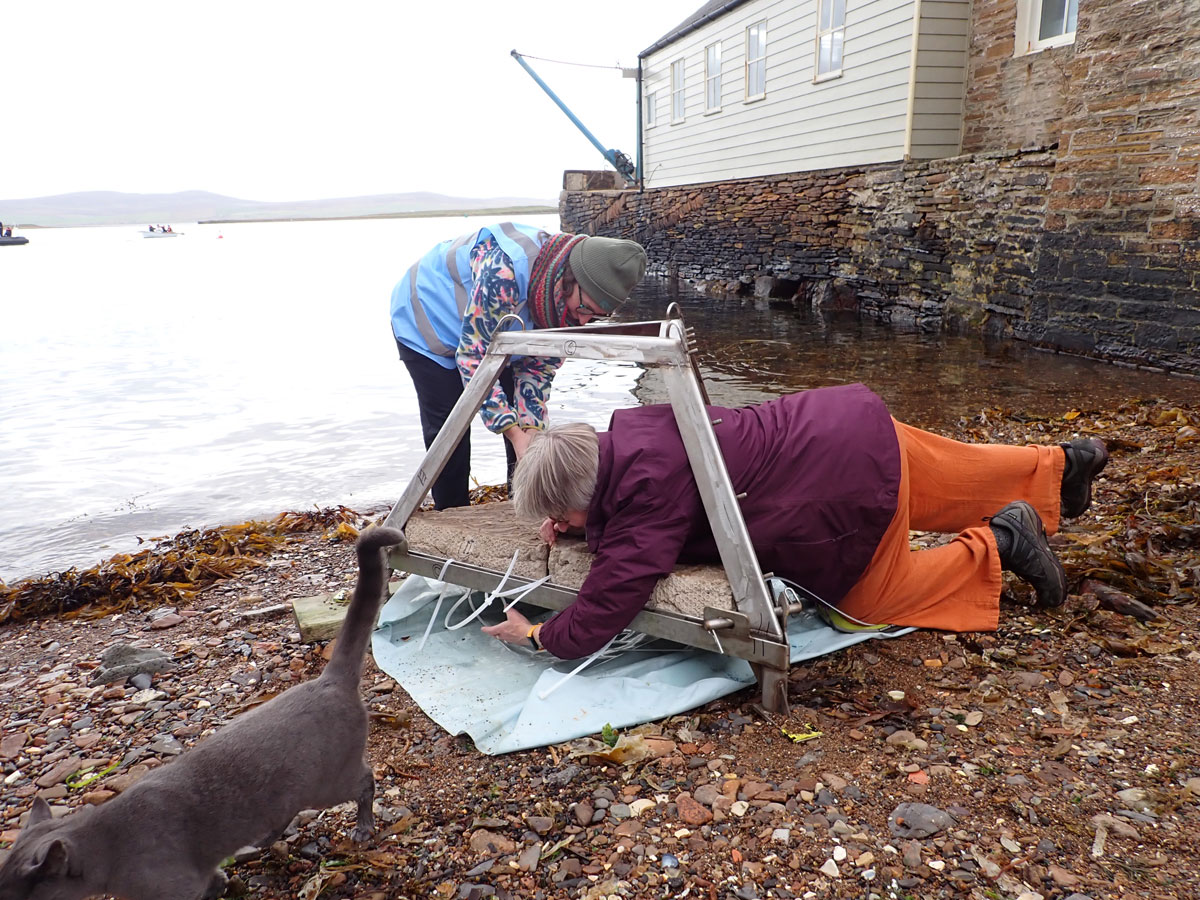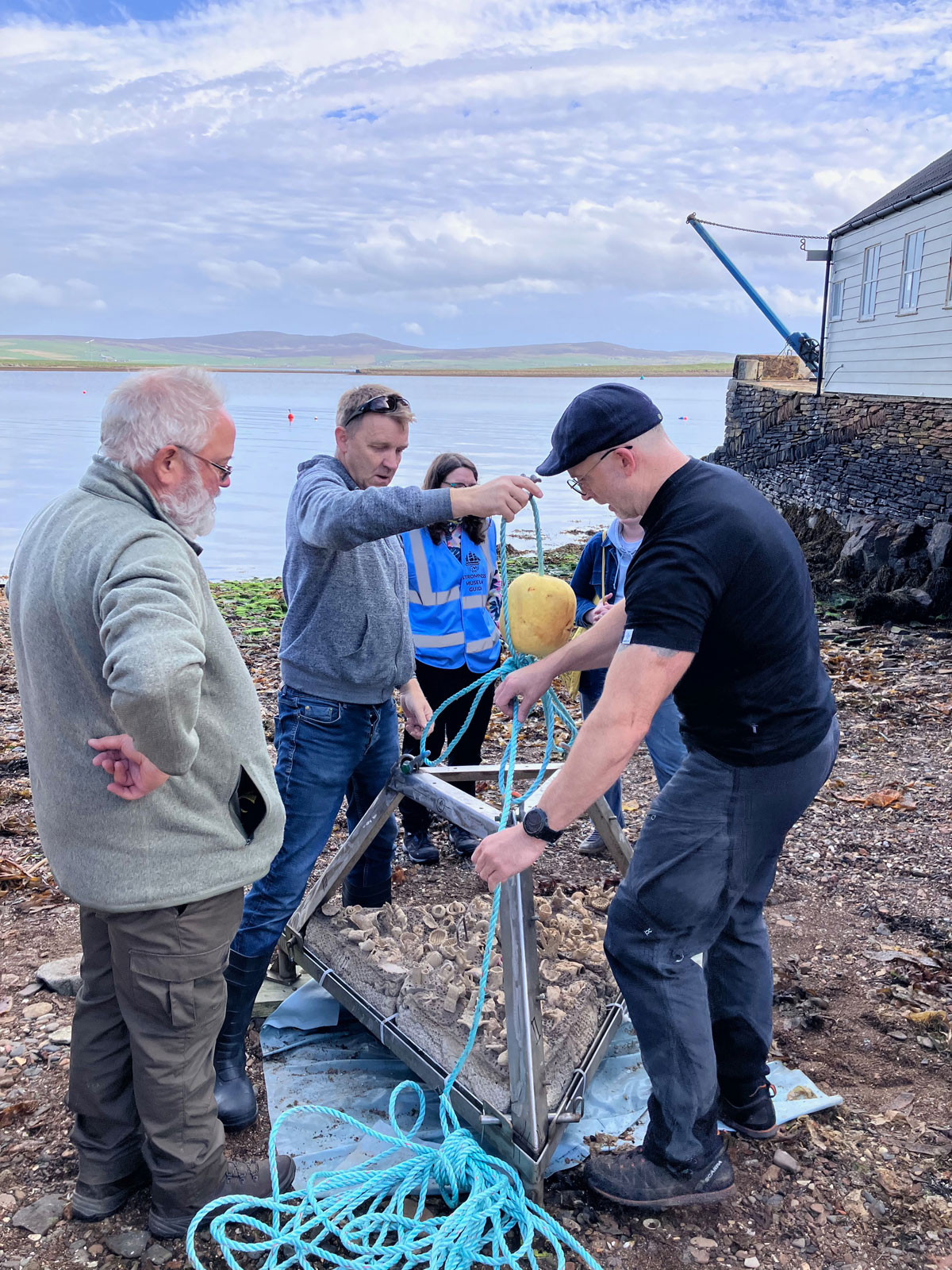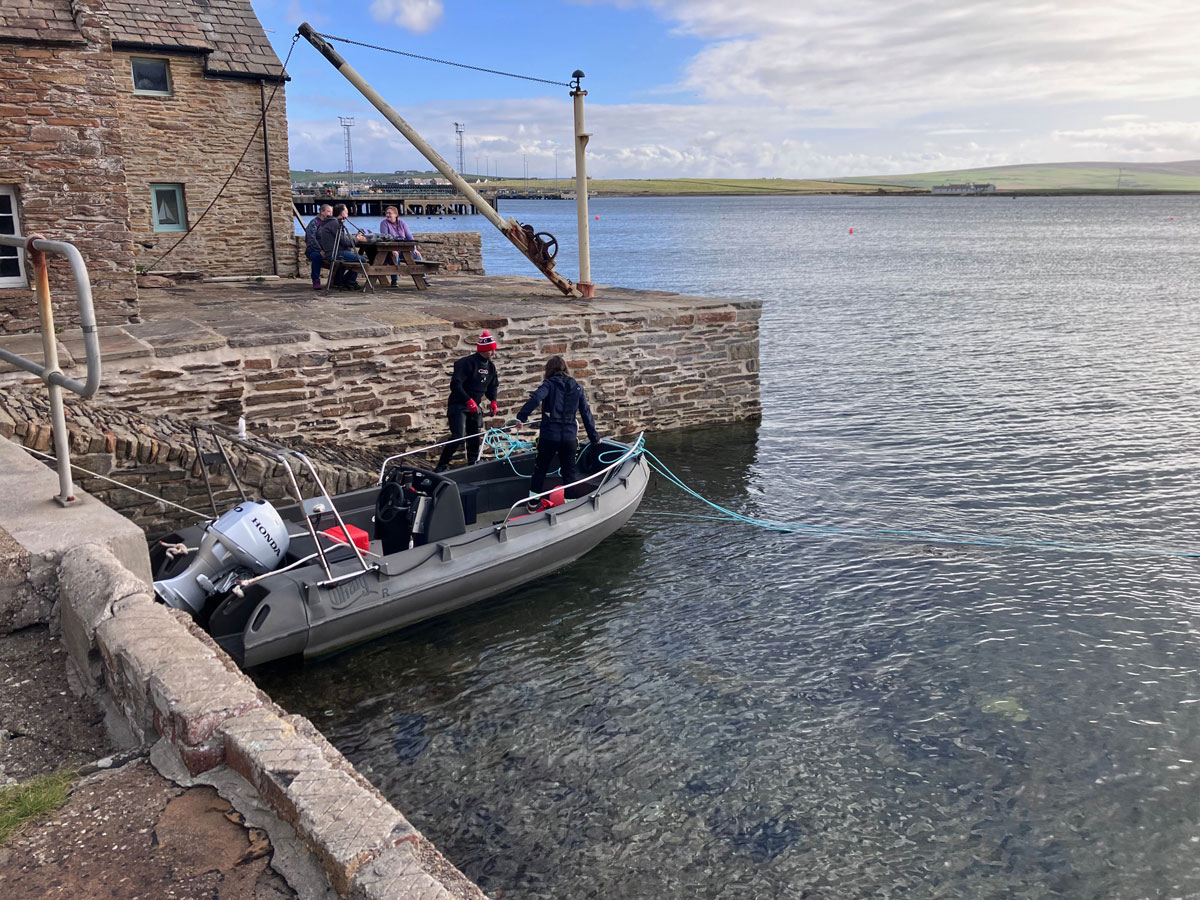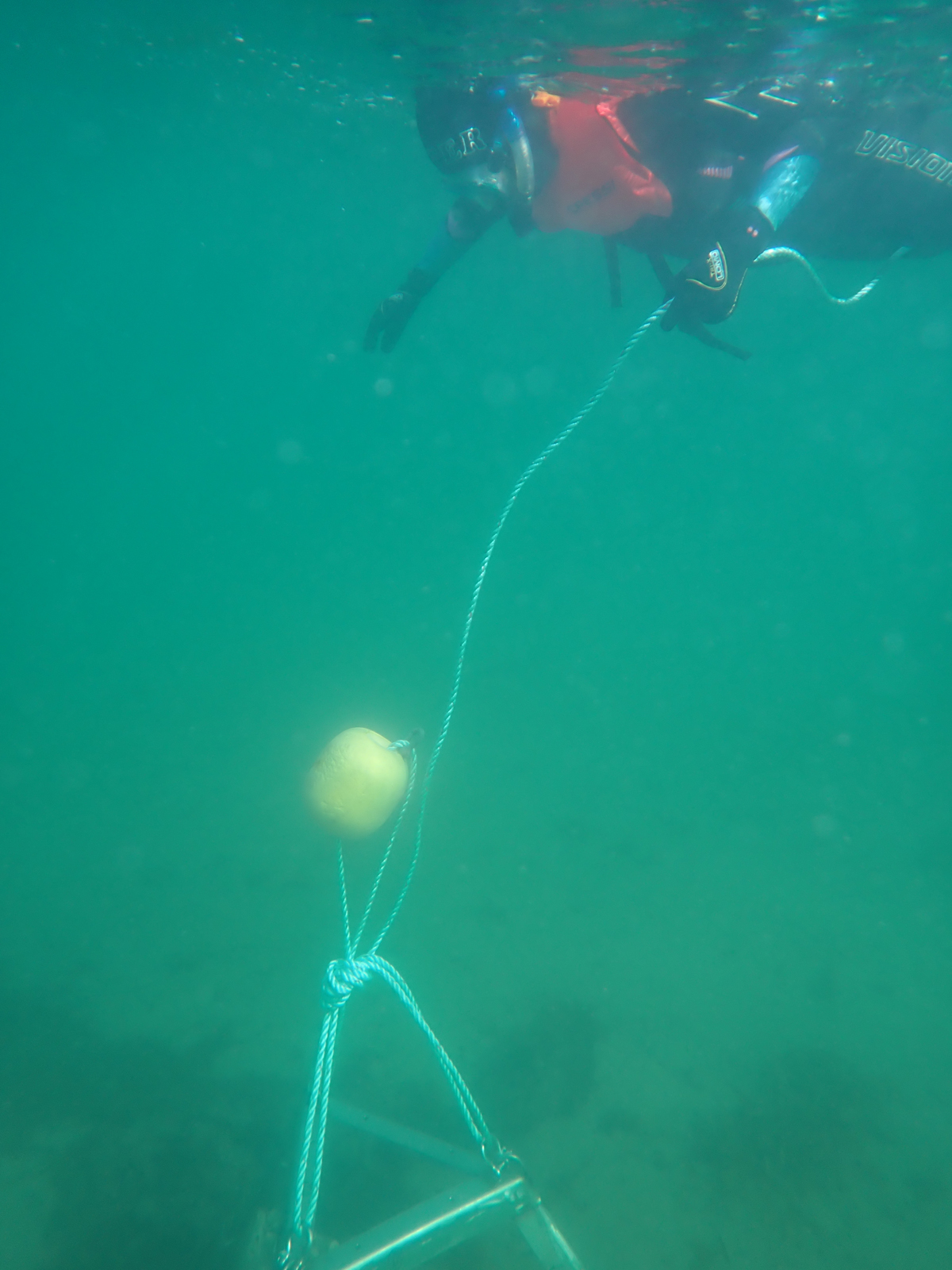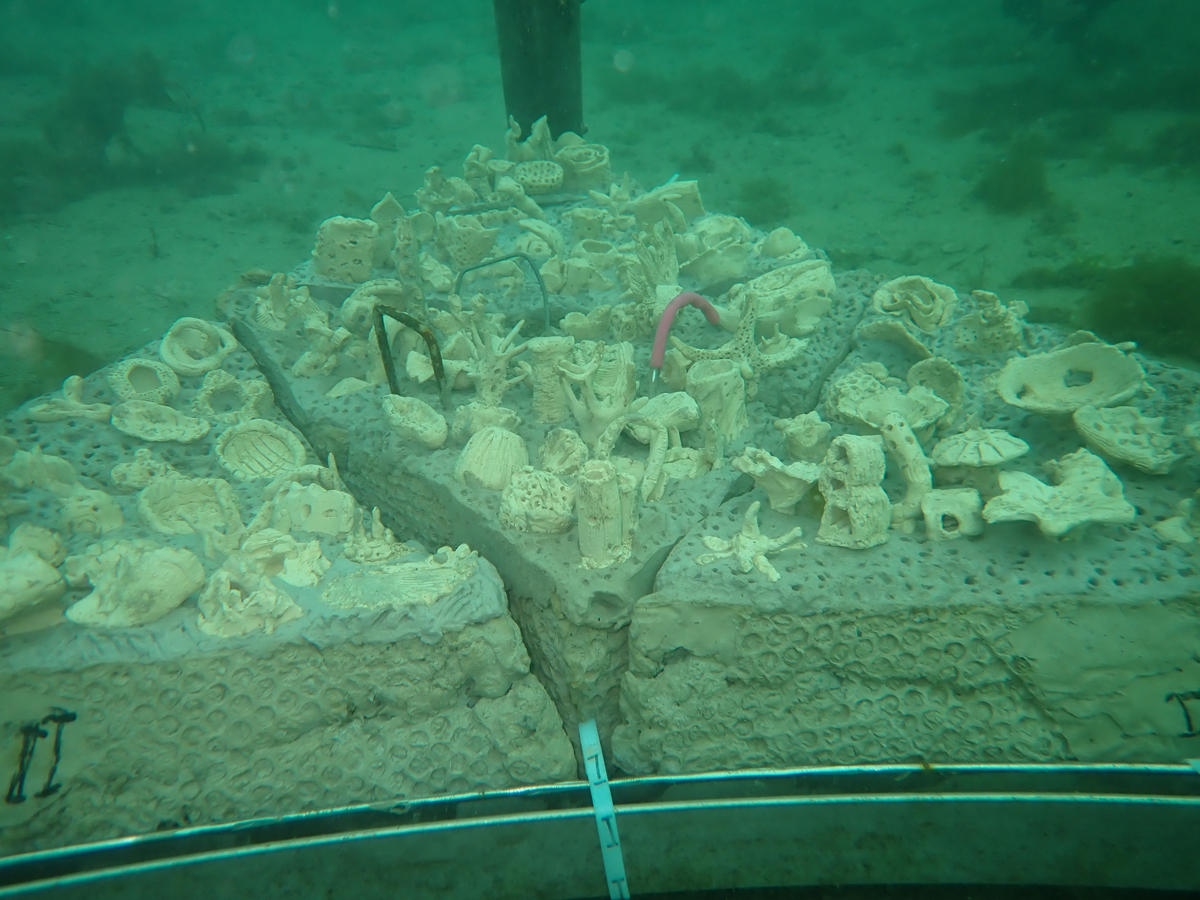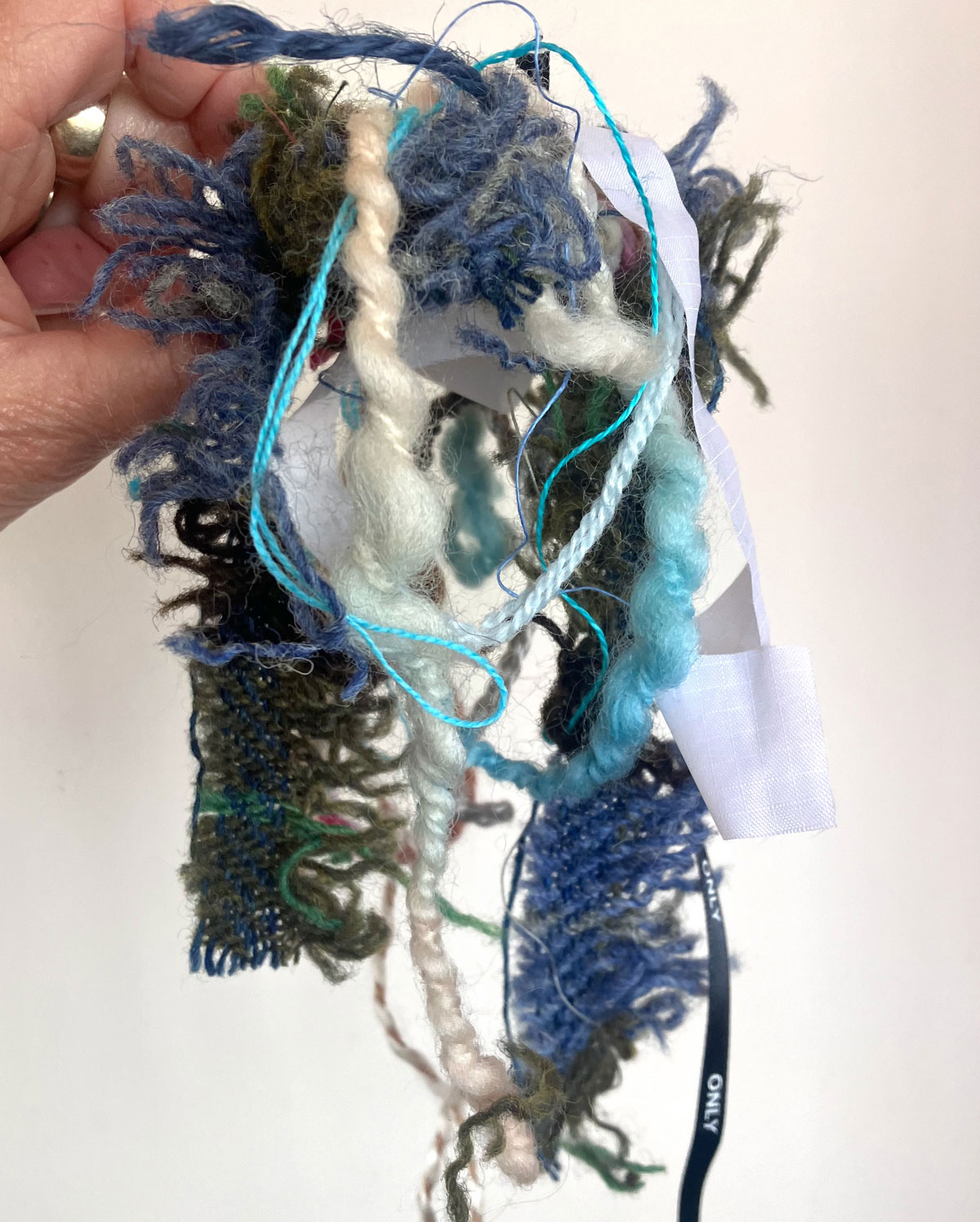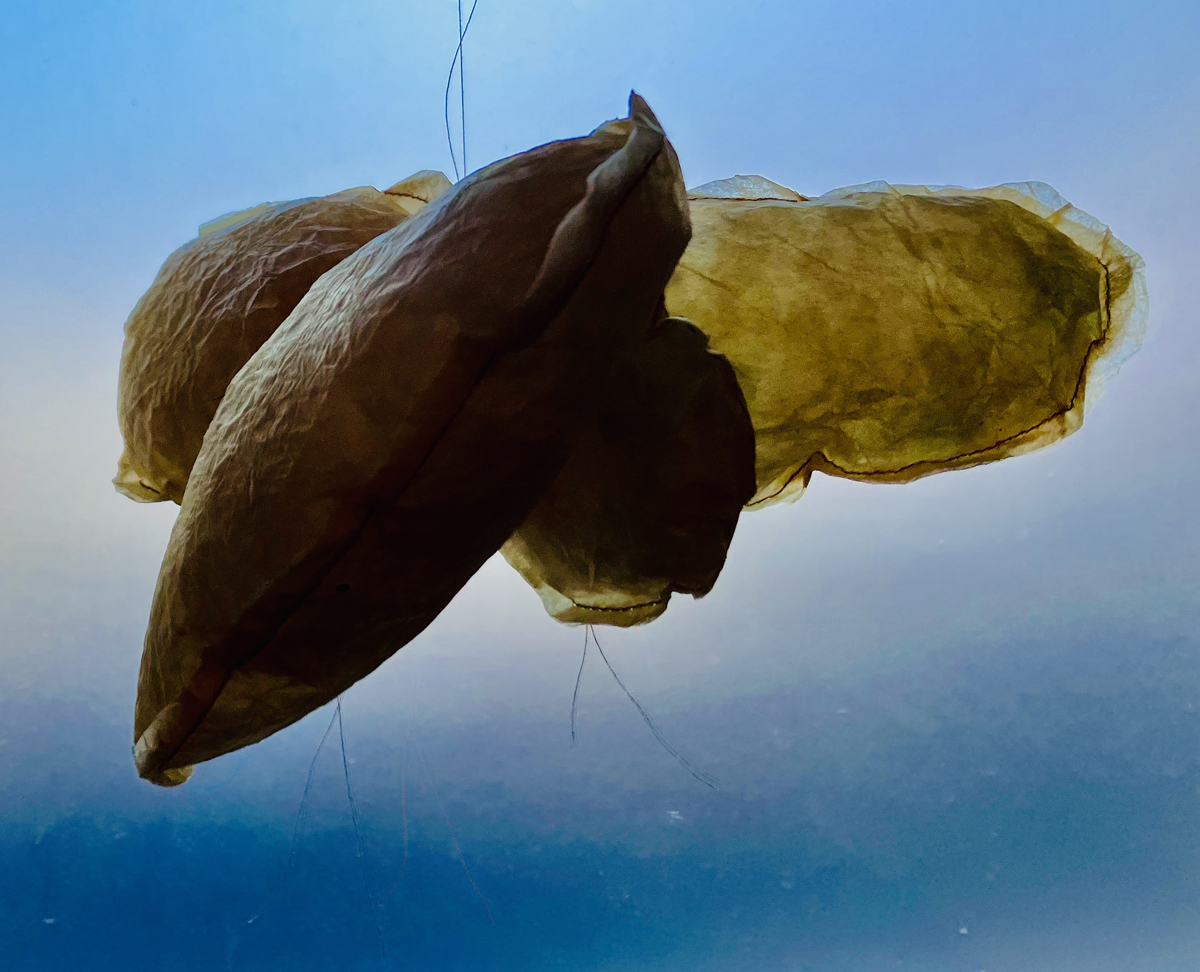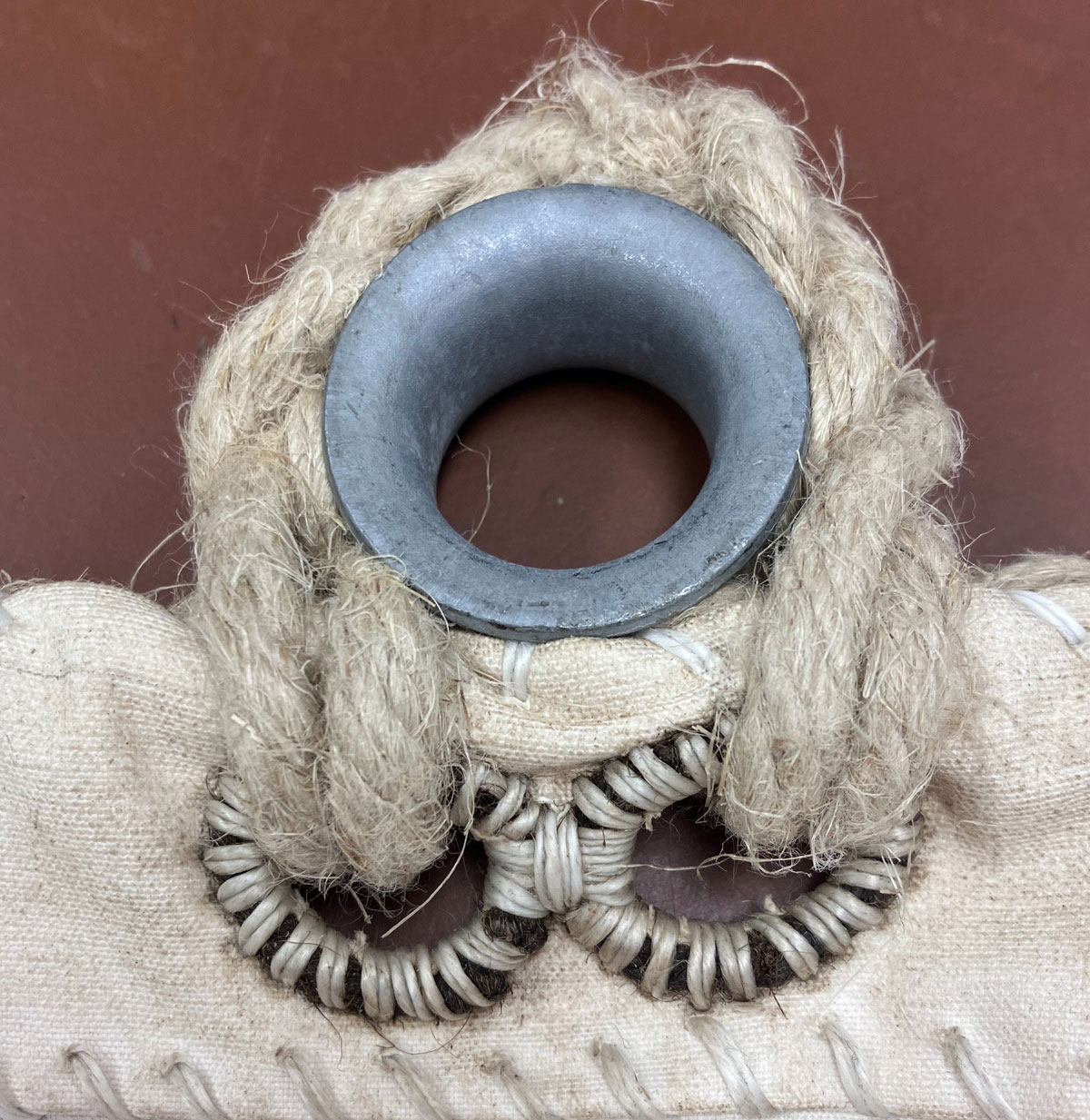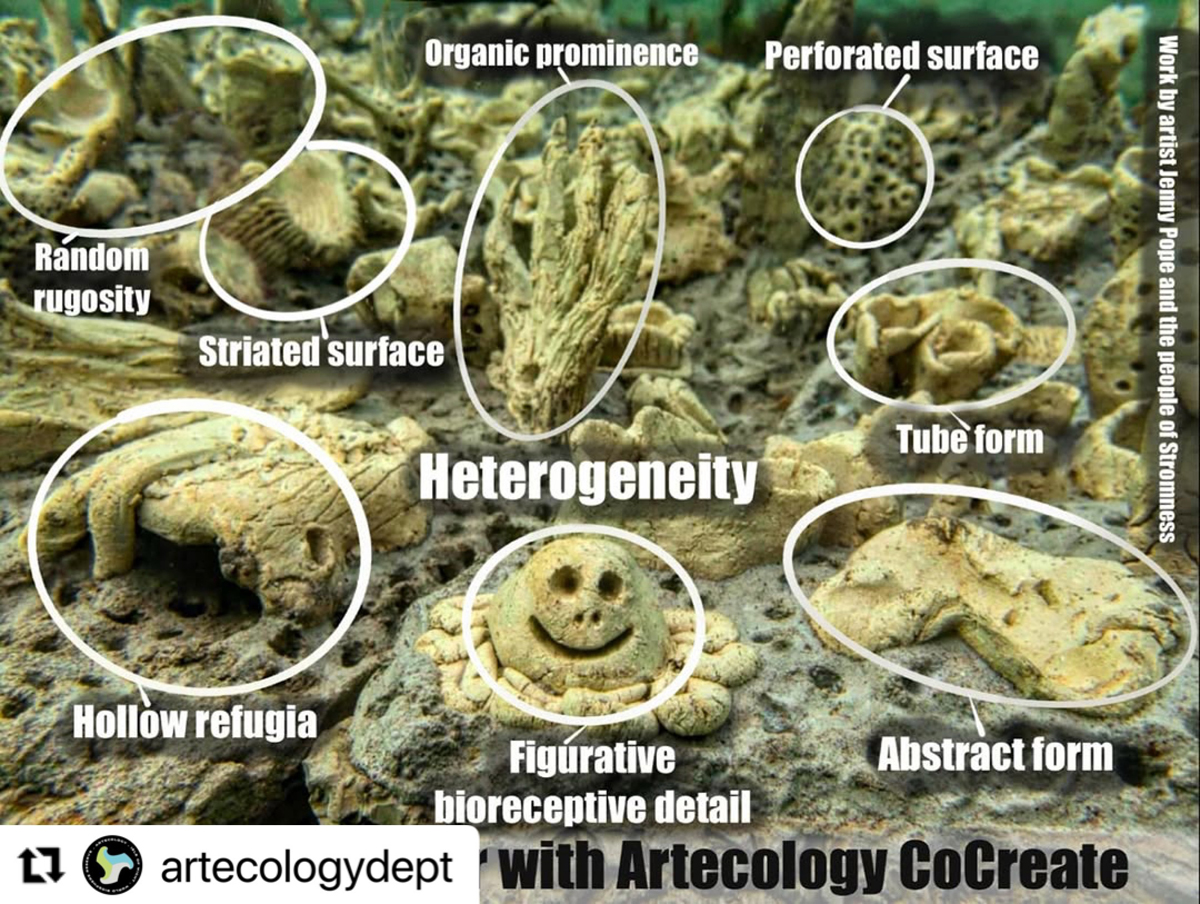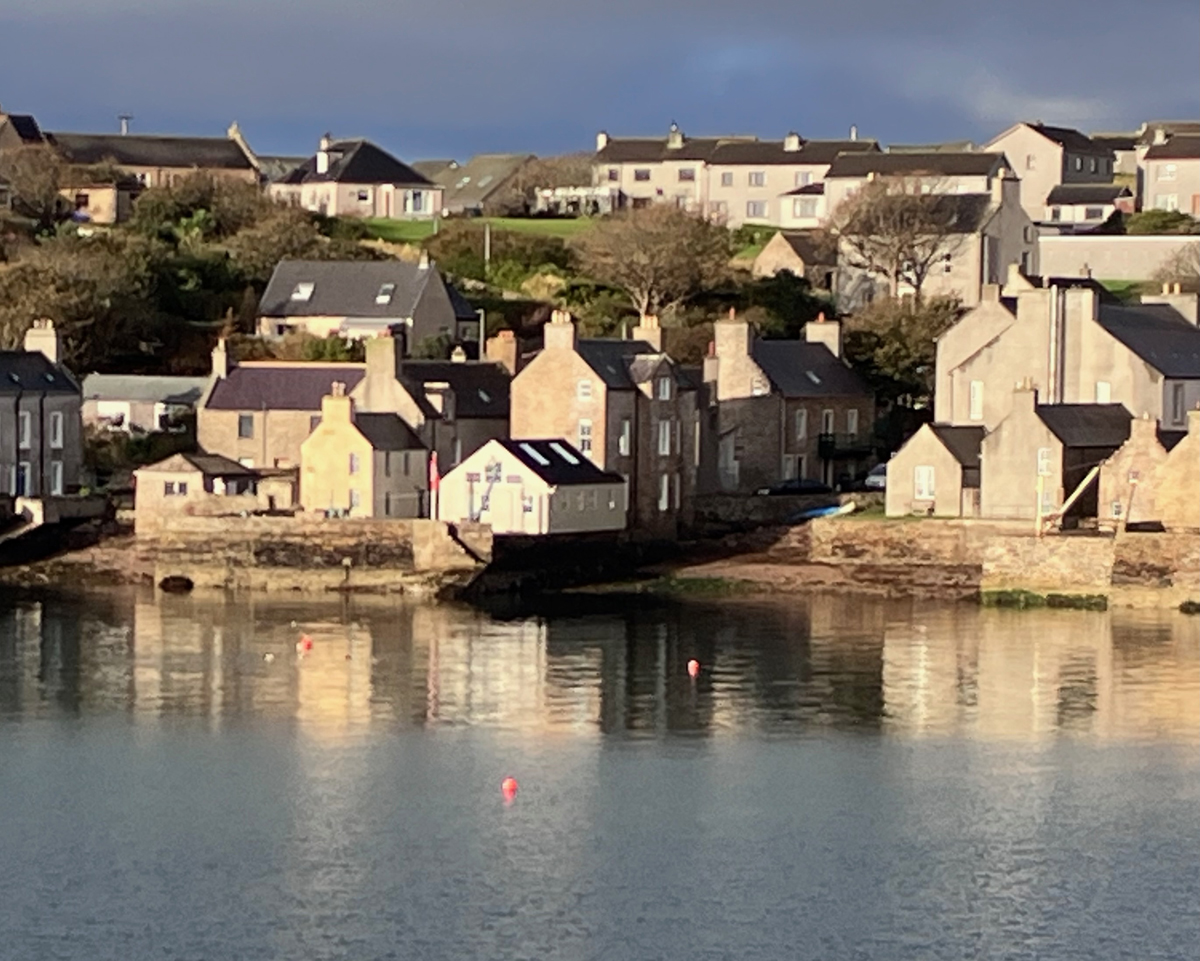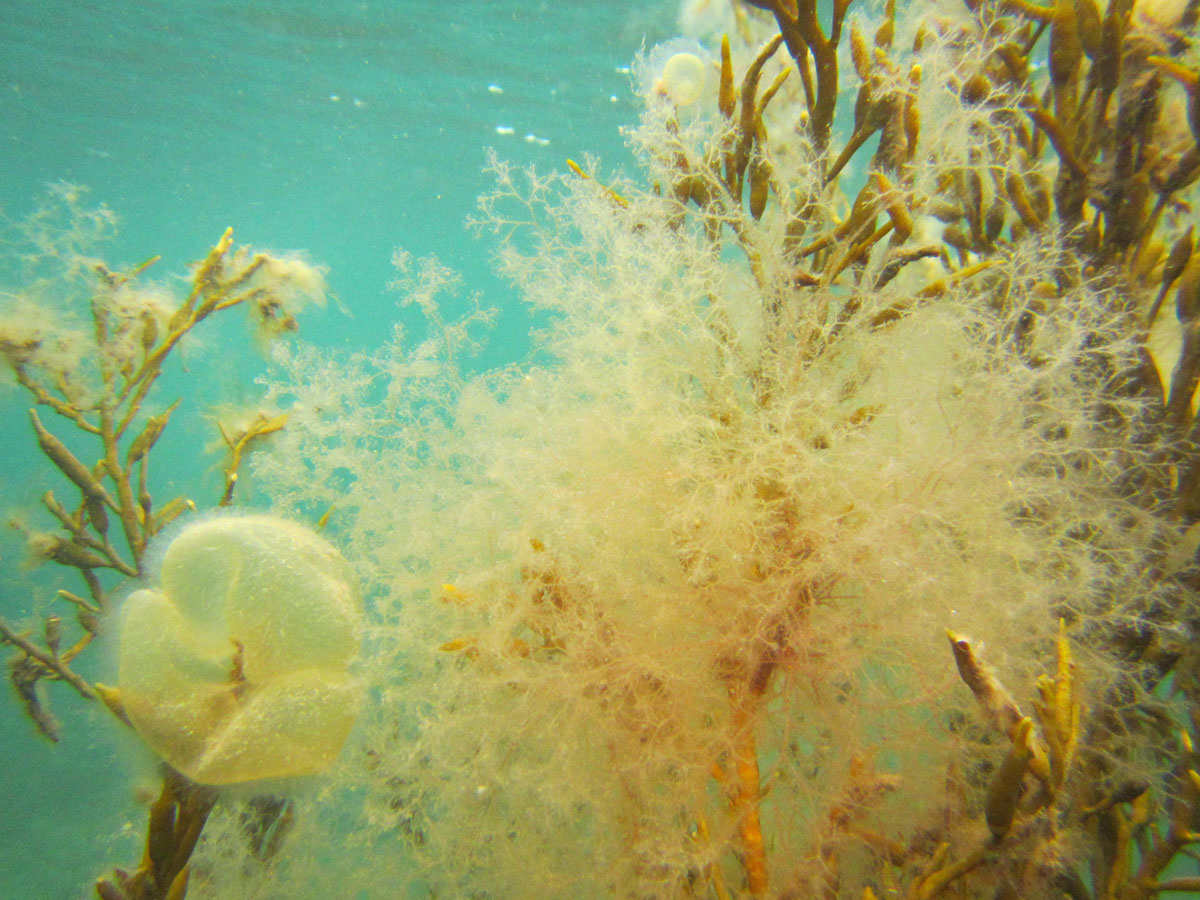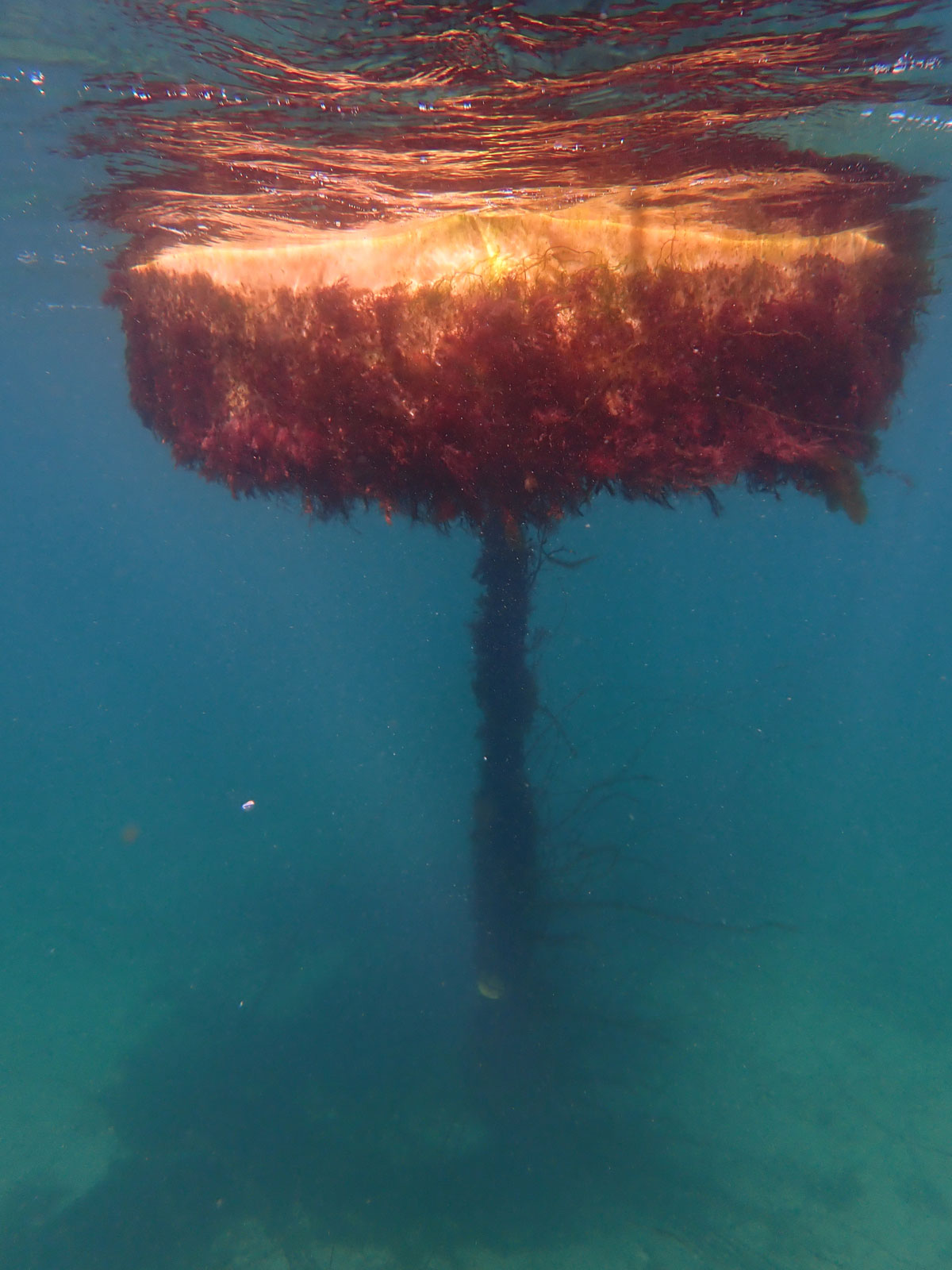
Shoogly Holm
Background
I am now working on an 18 month project from March 2025 to October 2026 in Orkney funded by the Creative Scotland Individual Fund. This falls within my larger project ‘Buoyancy in Unprecedented Times’ which I use to symbolise the feelings of resilience in the face of climate change.
Shoogly Holm project has 3 interconnected threads running through it, researching and making a useful floating sculpture, running art workshops about eco anxiety and a citizen science project.
Partnerships
I am working with Stromness Museum, Orkney International Science Festival (OISF), Artecology and The Blide Trust in partnership to highlight marine biodiversity loss, explore reactions to climate crisis and create positive actions to counter eco anxiety through citizen science. I am researching, designing and constructing a floating sculpture to be moored in Stromness Harbour. The function is as an intentional marine habitat as well as housing monitoring equipment and gather data, all publicised and explored at the Stromness Museum and OISFs 2026 programme. I am working alongside Katy Firth (Museum Climate Change Exhibitions and Outreach Officer) with the local community and The Blide Trust’s members on themes of climate change and marine environment, running workshop to help them creatively cope with eco anxiety and make co-created marine habitats.
Learning and research
I do practical research when I get the chance, rockpooling and snorkelling are great ways to watch marine life in the UK. This project combines marine science/technology/visual art and in order that I develop my own understanding of the issues, challenges and possibilities I have been meeting with various marine scientists, local and technical experts in Orkney. These have including Dr Jo Porter, Dr Jenny Kakkonen, Inga Williamson, Dr Gareth Davies, Alison Skene, Rebecca Marr, Katy Firth and Flo Ungaro. It is a fascinating and ongoing process for me to gather information and develop a robust sculpture for the Orcadian marine environment whilst considering the functionality of a bio receptive object.
Timeline for project
March to June 2025
I researched and developed ideas in Edinburgh, liaising with Artecology to learn about their Cocreate model of community involvement in intentional marine habitat making.
July 2025 visit to Orkney
I collected materials donated by local marine energy organisation EMEC to create a mooring for the sculpture to act as an intentional habitat for marine life.
To coincide with Stromness Shopping week, Katy and I attended EMEC’s Renewables Revolution event, joined by artist Kerrianne Flett. Together we talked about the fascinating life of barnacles. A common issue for manmade structures is biofouling and we proposed opposite by designing bio-receptive surfaces. Participants had the opportunity to make a small ceramic form, a ‘peedie holm’, to be incorporated in the mooring of the sculpture.
Katy and I ran a further drop-in session outside the museum to explain the project and encourage people to make a small ceramic form. I described how visual art can become an intentional habitat for marine life and a starting point for citizen science. I explained the museum’s collections role in my inspiration.
I joined the Museum’s Snorkel Sarari, explaining to participants where the sculpture will be placed and what we might expect to see living there. I ran several workshops for The Blide Trust, including exploring creative ways to cope with ecoanxiety and then a workshop to create ceramic forms for the mooring surface.
Project Launch event at Museum
I presented my inspiration, research ideas and progress for the project Shoogly Holm. I described how visual art can become an intentional habitat for marine life and a starting point for citizen science. I was joined by Jenni Kakkonen, from Orkney Harbours Marine Environmental Unit to explain local marine colonisation and settlement. Then an informal discussion was led by Gareth Davies, CEO at Aquatera.
Summer 2025
I used a project space at Edinburgh Sculpture Workshop, and worked in their large covered yard to make the shuttering (wooden frame moulds) for the 8 concrete pieces to go into the EMEC metal frames. I liaised with Artecology, who helped me with the mixing and pouring process that they use. I designed the pieces to fit each of the frames and ensured they will be securely attached once in the sea. I had discussions with the Orkney harbour team and local volunteers in Stromness about how best to safely install the mooring coming up with a workable plan, thanks to their knowledge and ingenuity.
Whilst this was happening Kerrianne Flett fired all the 132 ceramic pieces made at workshops in July, ready to be attached on my next visit to Stromness in September.
September 2025
Launch of mooring into the sea
I visited Orkney again to finish constructing the concrete and clay mooring for Shoogly Holm. At a public drop-in event we assembled the mooring parts on the beach at high tide and mortared the small clay sculpted pieces to concrete bases within the EMEC-donated steel frame. This will become the ‘underwater bug hotel’ providing many different shapes and textures for marine life to attach to and settle on. Then by a great communal effort, the mooring was carefully lifted down the beach to the low water mark, ready to be sited the next day by boat.
Next day there was a ceremonial send off, the mooring was towed from the beach to a position just off shore of the museum by James Burgon of the UHI Nav School and Malcolm Thomson of Sula Diving. They were assisted by Baptiste Mathie-Claverie from EMEC. There were poetry readings by Ali Skene and Anne Bevan and a few words to toast the mooring by Gareth Davies, Jenny Pope and Katy Firth, all accompanied by whisky and cake.
Then divers Angeles Fernandez Pena and Karen Borswarva visited the mooring underwater to get ‘Day Zero’ footage and photos. Everyone involved is excited to see what colonises the sculpture in the coming months.
September 2025 to March 2026
In my studio I will be focussing on constructing the floating part of the sculpture, thinking about buoyancy, weight, marine robustness and bio-receptivity. Sources of inspiration come from globular seaweeds and life buoys, as well as the Halkett air boat.
The mooring part of the sculpture with the intentional habitat will now overwinter under the sea just outside the museum.Karen Boswarva of Seasearch Orkney & Shetland will be organising a series of monthly monitoring events and divers and snorkellers can contact Karen to get involved. She will be using the citizen science Seasearch protocol to gather data about colonisation of mooring with an added focus on a few iconic ceramic forms over the months. She will also be collecting water samples to look at plankton that is in the harbour.
March 2026 Tbc
Return to Stromness to install the floating part of sculpture, have a public event/celebration and review the mooring system. Run workshops for people to make attachments to the floating part.
July 2026 Tbc
Visit to Stromness, during Shopping week. This time with a focus on citizen science, creative responses to discovering about our marine world. Some snorkelling and exploring marine data and what it means.
September 2026 Tbc
The mooring and floating part will be taken out of the sea and be part of a citizen science investigation about colonisation that has occurred, as part of the OISF. A learning science focus with a review of the project and the different elements.

